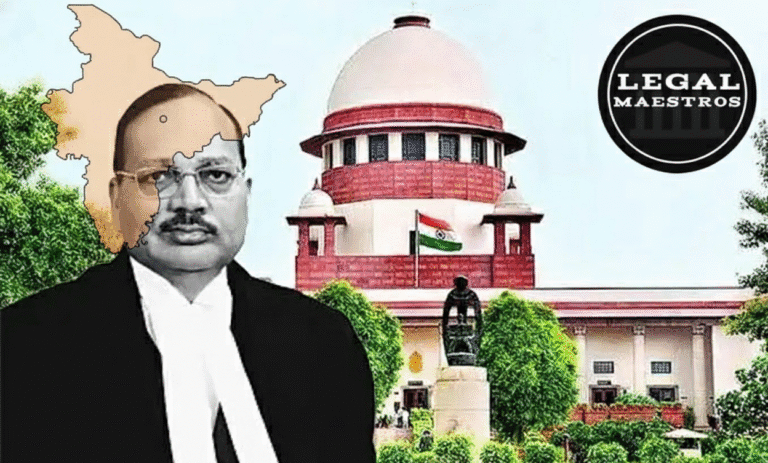
The Right to Life and Environmental Justice: How Environmental Degradation Threatens Human Life
However much this is in connection with one’s right to life, serious concerns about justice regarding the environmental condition are indeed brought forward to humanity. That our natural settings cause disinterred ecosystems goes to the other end of impairing human lives and livelihood and even well-being.
**Environmental Degradation**
Environmental degradation is the reduction in the quality of natural resources, such as air, water, and soil, leading to the destruction of ecosystems and wildlife extinction. In most cases, this occurs due to human activities such as deforestation, pollution, and uncontrolled agricultural activities. According to the United Nations Environment Programme, damaged ecosystems worsen climate change, undermine food security, and put communities at risk. ([unep.org](https://www.unep.org/facts-about-nature-crisis?utm_source=chatgpt.com))
For any queries or to publish an article or post or advertisement on our platform, do call at +91 6377460764 or email us at contact@legalmaestros.com.
**Effects on Human Health
Environmental degradation has grave consequences for human health. The main outcome of environmental degradation is pollution, which has been identified as a causal agent for respiratory diseases, heart conditions, and certain cancers. According to the Office of Disease Prevention and Health Promotion, health problems caused by environmental pollutants include respiratory diseases, heart disease, and some types of cancer. People with low incomes are likely to reside in polluted areas and have unsafe drinking water. ([odphp.health.gov](https://odphp.health.gov/healthypeople/objectives-and-data/browse-objectives/environmental-health?utm_source=chatgpt.com))
In addition, environmental degradation facilitates the development and proliferation of infectious diseases. UNEP identifies that environmental degradation creates direct health risks, which include extreme weather and floods. It is considered one of the causes of non-communicable diseases, but it also enables infectious diseases as well as other harmful effects between animal, human, and ecosystem health. ([unep.org](https://www.unep.org/topics/chemicals-and-pollution-action/pollution-and-health/why-does-environment-health-and?utm_source=chatgpt.com))
For any queries or to publish an article or post or advertisement on our platform, do call at +91 6377460764 or email us at contact@legalmaestros.com.
**Socio-Economic Implications**
Beyond health, environmental degradation exacerbates socio-economic disparities. Marginalized communities often bear the brunt of environmental harm, leading to increased poverty and reduced quality of life. As environmental degradation worsens poverty, it drives people towards overharvesting of resources, namely, trees. When land is degraded, people are more likely to deforest an area in order to access the fertile forest soil for agricultural and other uses. ([plantwithpurpose.org](https://plantwithpurpose.org/stories/causes-effects-and-solutions-to-environmental-degradation/?utm_source=chatgpt.com))
Moreover, the loss of biodiversity and ecosystem services threatens food security and livelihoods, especially in developing regions. According to UNEP, nature loss has far-reaching consequences. Damaged ecosystems exacerbate climate change, undermine food security, and put people and communities at risk. ([unep.org](https://www.unep.org/facts-about-nature-crisis?utm_source=chatgpt.com))
For any queries or to publish an article or post or advertisement on our platform, do call at +91 6377460764 or email us at contact@legalmaestros.com.
**Legal Perspectives: The Right to Life and Environmental Justice**
The right to life is a fundamental human right that is enshrined in various international treaties and national constitutions. Environmental degradation, by threatening human health and survival, directly impinges upon this right. Legal scholars argue that states have an obligation to protect citizens from environmental harm that jeopardizes their right to life.
In the case of Portillo Cáceres v. Paraguay, the United Nations Human Rights Committee recognized environmental damage to be connected with the right to life. The case involved a death caused by pesticide poisoning through activities of nearby industrial farming from Rubén Portillo Cáceres. The committee concluded that the state had violated the right to life and the right to private and family life under the International Covenant on Civil and Political Rights because of its failure to prevent and address the environmental harm. ([en.wikipedia.org](https://en.wikipedia.org/wiki/Portillo_C%C3%A1ceres_v_Paraguay?utm_source=chatgpt.com))
For any queries or to publish an article or post or advertisement on our platform, do call at +91 6377460764 or email us at contact@legalmaestros.com.
Similarly, in Duarte Agostinho and Others v. Portugal and 32 Other States, the group of young plaintiffs argued that the consequences of climate change-be it through the distress caused by forest fires or heatwaves-allegedly endanger their right to life. They insisted that these young persons are more likely to be affected with the highest intensity and thus their fundamental rights are violated as well. ([climatecasechart.com](https://climatecasechart.com/non-us-case/youth-for-climate-justice-v-austria-et-al/?utm_source=chatgpt.com))
**Environmental Justice Movements**
Environmental justice seeks to address the disproportionate impact of environmental hazards on marginalized communities. It emphasizes the fair distribution of environmental benefits and burdens, ensuring that no group bears an undue share of environmental risks.
For any queries or to publish an article or post or advertisement on our platform, do call at +91 6377460764 or email us at contact@legalmaestros.com.
Legal actions played a crucial role in the advancements of environmental justice. For example, the Legal Defense Fund filed several environmental justice cases, Clean Air Alternative Coalition v. U.S. Dept. of Transportation, to advocate for communities harmed by environmental exposures. ([www.naacpldf.org](https://www.naacpldf.org/case-issue/environmental-justice-cases-matters/?utm_source=chatgpt.com))
Moreover, climate litigation has emerged as a key tool in delivering climate justice. The United Nations Environment Programme reports that the total number of climate change court cases has more than doubled since 2017 and is growing worldwide, reflecting the increasing recognition of legal avenues to address environmental degradation. ([unep.org](https://www.unep.org/news-and-stories/press-release/climate-litigation-more-doubles-five-years-now-key-tool-delivering?utm_source=chatgpt.com))
**Conclusion**
For any queries or to publish an article or post or advertisement on our platform, do call at +91 6377460764 or email us at contact@legalmaestros.com.
Environmental degradation poses a profound threat to human life, health, and dignity. It challenges the very essence of the right to life and underlines the need for robust environmental justice frameworks. Addressing this issue requires comprehensive legal, policy, and grassroots initiatives to protect the environment and uphold human rights. As the famous environmentalist Rachel Carson once said, “In nature, nothing exists alone.” Our well-being is intrinsically linked to the health of our planet, and safeguarding it is imperative for current and future generations.







